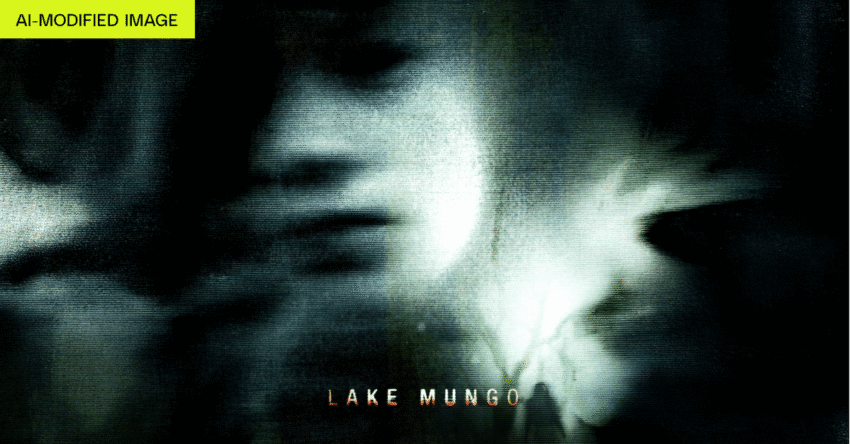
Lake Mungo stands out as a haunting and emotionally resonant entry in the found footage genre.
Understanding the Found Footage Genre
Found footage films have carved out a unique niche in the horror genre, often blurring the lines between reality and fiction. This style, characterized by its use of handheld cameras and a documentary format, aims to immerse viewers in a sense of authenticity. While some films, like The Blair Witch Project and Rec, have achieved critical acclaim and commercial success, many others have failed to resonate with audiences. The disparity in quality raises questions about what makes a found footage film effective.
The Challenge of Authenticity
One of the primary challenges in creating a compelling found footage film is achieving a sense of authenticity. Viewers often approach these films with skepticism, questioning the believability of the narrative. A successful found footage film must not only engage the audience but also convince them that what they are witnessing could be real. This is where Lake Mungo excels, presenting itself as a legitimate documentary that explores themes of grief, loss, and the supernatural.
A Closer Look at Lake Mungo
Released in 2008, Lake Mungo is directed by Joel Anderson and is often described as a slow-burn mockumentary. The film tells the story of a family grappling with the mysterious drowning of their daughter, Alice. As they attempt to come to terms with their loss, they begin to experience strange occurrences that lead them to believe that Alice’s spirit may still be present.
Plot Overview
The narrative unfolds through a series of interviews and found footage, creating a chilling atmosphere that keeps viewers on edge. The film’s structure allows for a gradual build-up of tension, as the family uncovers unsettling truths about Alice’s life and the events leading up to her death. The use of interviews with family members, friends, and paranormal experts adds layers to the story, making it feel more grounded and believable.
Emotional Depth
What sets Lake Mungo apart from other found footage films is its emotional depth. The film delves into the complexities of grief and the ways in which it can manifest. The characters are not merely vessels for horror; they are fully realized individuals coping with their loss. This emotional resonance elevates the film beyond simple scares, allowing it to linger in the minds of viewers long after the credits roll.
The Cinematic Techniques of Lake Mungo
Anderson employs various cinematic techniques to enhance the film’s authenticity. The use of grainy footage, coupled with a subdued color palette, creates a sense of realism that draws viewers into the story. The sound design also plays a crucial role, with subtle audio cues heightening the tension and contributing to the film’s eerie atmosphere.
Mockumentary Style
The mockumentary format allows for a unique storytelling approach. By presenting the narrative as a documentary, the film invites viewers to question the nature of reality and the reliability of memory. This is particularly effective in a horror context, where the line between the real and the supernatural is often blurred. The interviews with the family and friends serve to humanize the characters, making their experiences more relatable and impactful.
Found Footage Elements
The found footage elements are seamlessly integrated into the narrative, enhancing the film’s overall sense of dread. The use of home videos and surveillance footage adds an unsettling layer to the story, making it feel as though the audience is peering into the private lives of the characters. This voyeuristic aspect of the film amplifies the horror, as viewers become complicit in the family’s tragedy.
Thematic Exploration
At its core, Lake Mungo explores themes of memory, loss, and the search for closure. The film raises questions about how we cope with grief and the lengths we go to in order to connect with those we have lost. The supernatural elements serve as a metaphor for the unresolved emotions that linger after a loved one’s death.
Grief and Loss
The portrayal of grief in Lake Mungo is both poignant and haunting. The characters’ reactions to Alice’s death are raw and relatable, showcasing the various ways individuals process loss. The film does not shy away from depicting the darker aspects of grief, including denial and obsession. As the family delves deeper into the mystery surrounding Alice’s death, their emotional turmoil becomes increasingly palpable.
Memory and Reality
Another significant theme in the film is the nature of memory and its reliability. The characters grapple with their recollections of Alice, questioning what is real and what is a product of their grief. This theme is particularly relevant in the context of found footage, as the format itself raises questions about the authenticity of the images presented. The film challenges viewers to consider how memories can be distorted over time and how they shape our understanding of reality.
Critical Reception and Legacy
Upon its release, Lake Mungo received positive reviews from critics, who praised its innovative approach to horror and its emotional depth. The film has since gained a cult following, with many considering it a standout entry in the found footage genre. Its influence can be seen in subsequent films that attempt to blend horror with emotional storytelling.
Impact on the Genre
While Lake Mungo may not have achieved the same level of mainstream success as some of its peers, its impact on the genre is undeniable. The film’s unique blend of horror and emotional resonance has inspired filmmakers to explore similar themes in their own work. As the found footage genre continues to evolve, Lake Mungo remains a touchstone for those seeking to create authentic and thought-provoking horror.
Audience Reactions
Audience reactions to Lake Mungo have varied, with some viewers praising its slow-burn approach and emotional depth, while others have found it less engaging compared to more traditional horror films. However, those who appreciate the film’s unique storytelling and thematic exploration often find it to be a rewarding experience. The film’s ability to evoke genuine emotion, coupled with its chilling atmosphere, makes it a standout in the genre.
Conclusion
In a landscape filled with forgettable found footage films, Lake Mungo emerges as a haunting and emotionally resonant masterpiece. Its innovative approach to storytelling, combined with its exploration of grief and memory, sets it apart from its peers. For those seeking a horror film that lingers in the mind long after viewing, Lake Mungo is a must-watch. The film’s ability to evoke genuine emotion while delivering chilling moments makes it a classic that deserves recognition in the annals of horror cinema.
Source: Original report
Was this helpful?
Last Modified: November 3, 2025 at 4:36 am
1 views















